Avery Dennison Retail Information Services SDCMSD10G Summit SDC-MSD10G used in a Monarch model 6052 or 6057 User Manual 6057OH Draft May2011
Avery Dennison Retail Information Services, LLC Summit SDC-MSD10G used in a Monarch model 6052 or 6057 6057OH Draft May2011
Contents
- 1. User Manual 1 of 2
- 2. user manual 2 of 2
User Manual 1 of 2
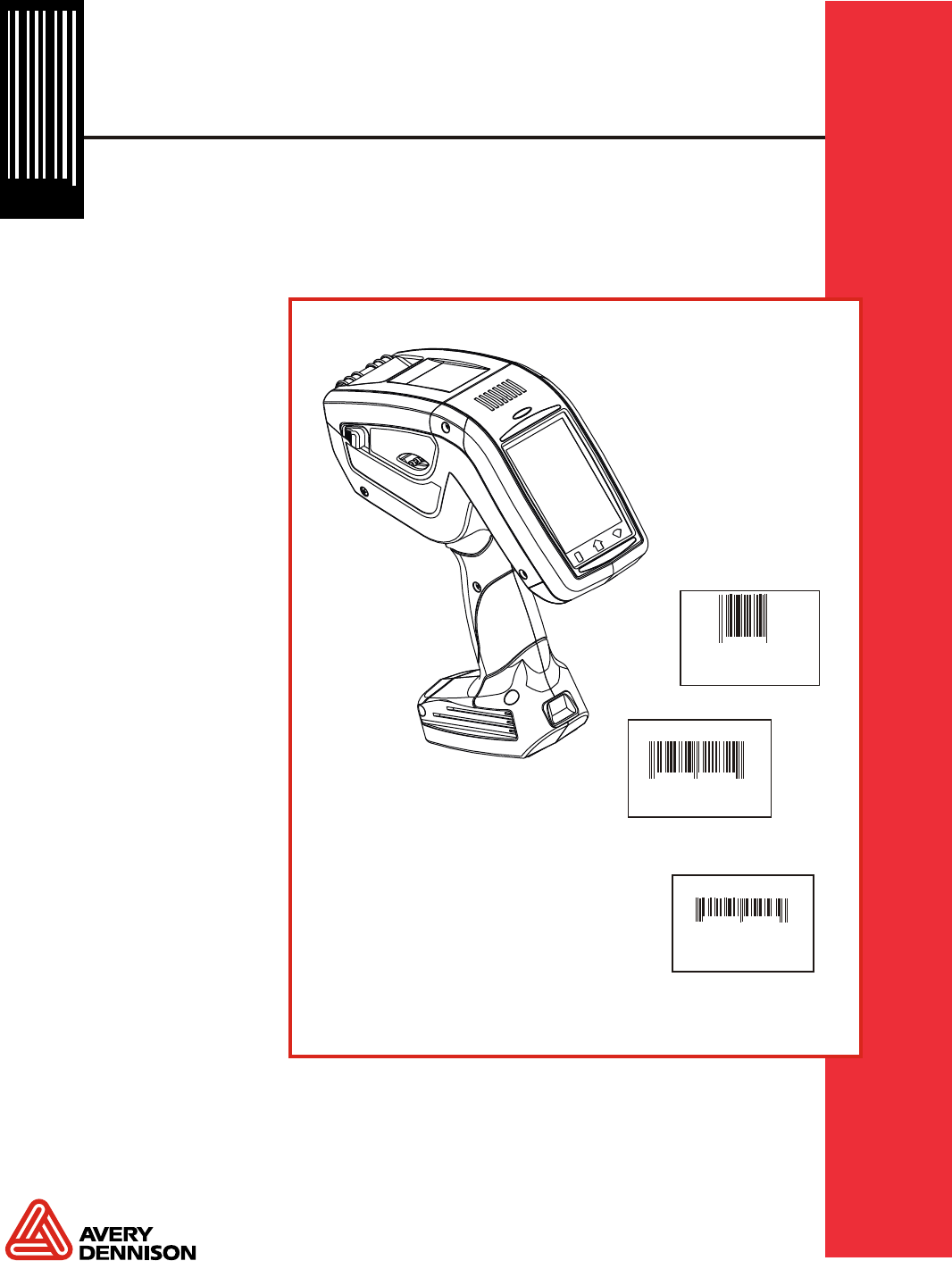
©2011 Avery Dennison Corp. All rights reserved.
28028 28028
0 0
04/18/07 7512
653258
$15.50
32232
SALE
$25.00
58523
4 9
PEARL EARRINGS
99565
$200.00
04/18/07
8
7512
45453
9
Operator's Handbook
®
Pathfinder 6057
Printer
TC6057OH Rev. AA 6/11
DRAFT
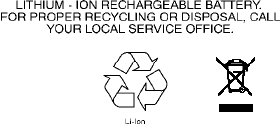
Each product and program carries a respective written warranty, the only warranty on which the
customer can rely. Avery Dennison Corp. reserves the right to make changes in the product,
the programs, and their availability at any time and without notice. Although Avery Dennison
Corp. has made every effort to provide complete and accurate information in this manual, Avery
Dennison Corp. shall not be liable for any omissions or inaccuracies. Any update will be
incorporated in a later edition of this manual.
2010 Avery Dennison Corp. All rights reserved. No part of this publication may be
reproduced, transmitted, stored in a retrieval system, or translated into any language in any
form by any means, without the prior written permission of Avery Dennison.
WARNING
This equipment has been tested and found to comply with the limits for a Class A digital device,
pursuant to Part 15 of the FCC Rules. These limits are designed to provide reasonable
protection against harmful interference when the equipment is operated in a commercial
environment. This equipment generates, uses, and can radiate radio frequency energy and, if
not installed and used in accordance with the instruction manual, may cause harmful
interference to local radio communications. Operation of this equipment in a residential area is
likely to cause harmful interference, in which case the user will be required to correct the
interference at his own expense.
CANADIAN D.O.C. WARNING
This digital apparatus does not exceed the Class A limits for radio noise emissions from digital
apparatus set out in the Radio Interference Regulations of the Canadian Department of
Communications.
Le présent appareil numérique n'émet pas de bruits radioélectriques dépassant les limites
applicables aux appareils numériques de la classe A prescrites dans le Réglement sur le
brouillage radioélectrique édicte par le ministère des Communications du Canada.
Trademarks
Pathfinder®, 9462, and 9465 are trademarks of Avery Dennison Retail Information Services,
LLC.
Avery Dennison® is a trademark of Avery Dennison Corporation.
Microsoft and Windows are trademarks of Microsoft Corporation.
Avery Dennison Printer Systems Division
170 Monarch Lane
Miamisburg, OH 45342
Outside the U.S., send batteries to:
EMEA, 4 Awberry Court
Croxle
y
Business Park, Hatters
DRAFT
i
TABLE OF CONTENTS
INTRODUCTION.................................................................................................................................1-1
Using this Manual..........................................................................................................................1-2
Audience......................................................................................................................................1-2
Getting Started .............................................................................................................................1-2
Helpful Reminders.........................................................................................................................1-2
USING BATTERIES ............................................................................................................................2-1
Using the Main Battery ..................................................................................................................2-1
Charging the Main Battery ..........................................................................................................2-1
Replacing the Main Battery .........................................................................................................2-1
Checking the Battery Status ...........................................................................................................2-2
Main Battery Safety Information......................................................................................................2-3
USING SUPPLIES ..............................................................................................................................3-1
Loading Supplies...........................................................................................................................3-1
Loading for Non-Peel Mode.........................................................................................................3-2
Loading Peel Mode Supplies .......................................................................................................3-3
Calibrating the Supply ...................................................................................................................3-4
Selecting the Supply Type..............................................................................................................3-4
ENTERING & PRINTING DATA ............................................................................................................4-1
Using the Input Panel ....................................................................................................................4-1
Using the Display..........................................................................................................................4-2
Reading the Status Bar...............................................................................................................4-2
Scanning Bar Codes......................................................................................................................4-2
Certification Note ..........................................................................................................................4-3
Printing ........................................................................................................................................4-3
Adjusting the Print Contrast............................................................................................................4-4
Power Management .......................................................................................................................4-4
CARE & MAINTENANCE .....................................................................................................................5-1
Cleaning....................................................................................................................................... 5-1
Cleaning the Display Screen .......................................................................................................5-1
Cleaning the Printhead ...............................................................................................................5-1
Cleaning the Platen Roller ..........................................................................................................5-2
Cleaning the Pinch and Feed Rollers ...........................................................................................5-3
Cleaning the Black Mark Sensor..................................................................................................5-3
Cleaning the Scanner Window.....................................................................................................5-4
Cleaning the Printhead Flex Cable...............................................................................................5-4
DRAFT
ii
Clearing Supply Jams.................................................................................................................... 5-5
Storing the Printer......................................................................................................................... 5-5
TROUBLESHOOTING .........................................................................................................................6-1
Checking the Software Version.......................................................................................................6-1
Printing a Test Label .....................................................................................................................6-2
Error Codes..................................................................................................................................6-3
Technical Support .........................................................................................................................6-3
SPECIFICATIONS & ACCESSORIES....................................................................................................A-1
Specifications ...............................................................................................................................A-1
Accessories..................................................................................................................................A-1
DRAFT
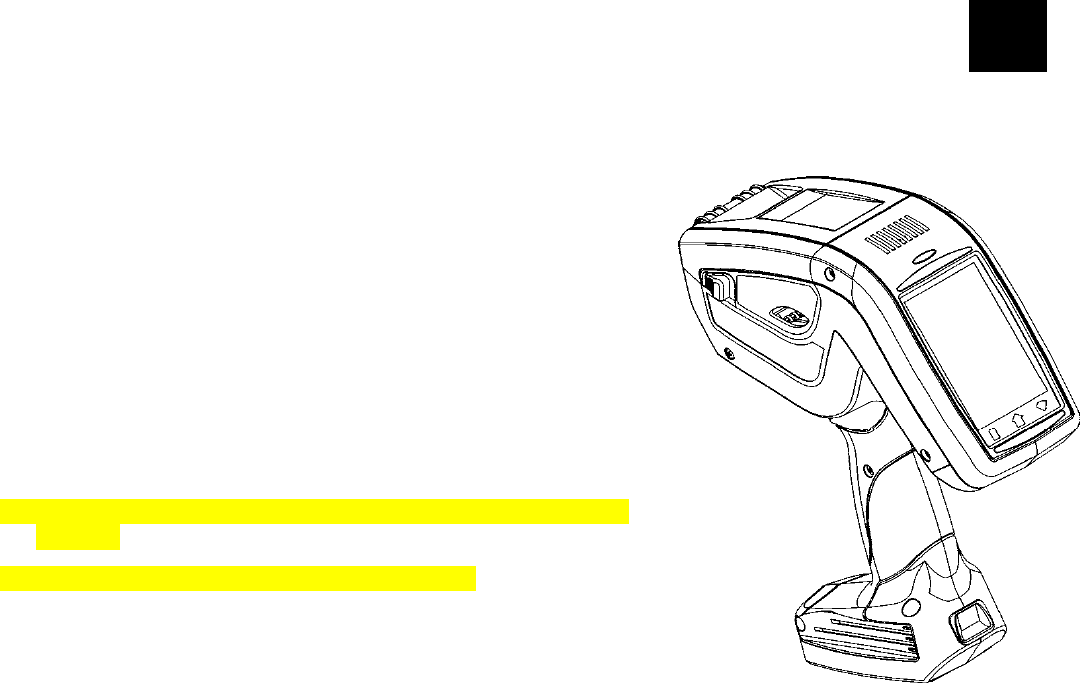
Introduction 1-1
INTRODUCTION
The Pathfinder® 6057 printer prints, scans bar codes, collects data, and communicates with
other devices. The printer operates on a Microsoft Windows-based CE platform.
The printer features
Touch screen display
Adjustable supply width capabilities
Clock/Calendar
USB port communications
Graphic printing capabilities
Display backlight
Low power shutdown to conserve the battery
On-Demand (factory-installed option) and continuous
printing
Laser scanner (factory-installed option)
Wireless 802.11b/g Radio (factory-installed option)
1
DRAFT
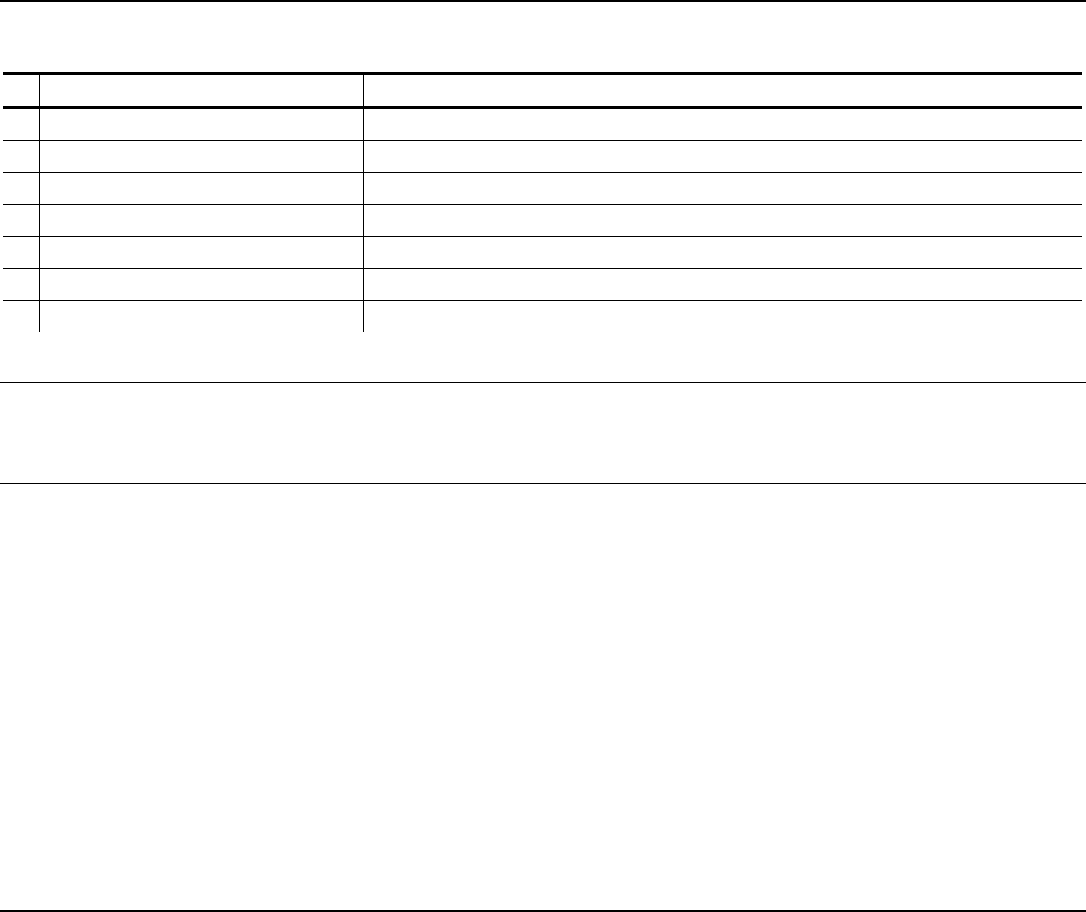
1-2 Operator's Handbook
Using this Manual
Following is a summary of the contents of this manual:
Chapter Contents
1 Introduction Information you should know before using the printer.
2 Using Batteries Charging, changing, and using batteries safely.
3 Using Supplies Supply loading.
4 Entering and Printing Data Using the display, keypad, scanner, and printing.
5 Care & Maintenance Clearing supply jams and cleaning the printer.
6 Troubleshooting Common problems and solutions.
A Specifications & Accessories Printer specifications and accessories/options.
Audience
This manual is for the operator who scans or manually enters data and prints and applies labels.
Getting Started
To start using the printer, you must:
1. Review the safety information in the Regulatory Compliance document provided with your
printer.
2. Charge the main battery. See “Charging the Main Battery” in Chapter 2 for more information.
Note: You must charge the battery before using it.
3. Insert the main battery. See “Changing the Main Battery” in Chapter 2 for more information.
4. Load supplies in the printer. See “Loading the Supplies” in Chapter 3 for more information.
5. Turn on the printer.
Note: Your System Administrator must load an application in the printer before you can use it.
Helpful Reminders
Always start with a fully charged battery.
Do not pound the printer when applying labels printed in peel mode.
Switch to a fully charged battery every time you load a new roll of supplies (doing so ensures
optimum print quality).
Turn off the printer when you are not using it.
Operate and store the printer with the recommended temperature and humidity ranges.
See Appendix A, “Specifications and Accessories,” for more information.
DRAFT
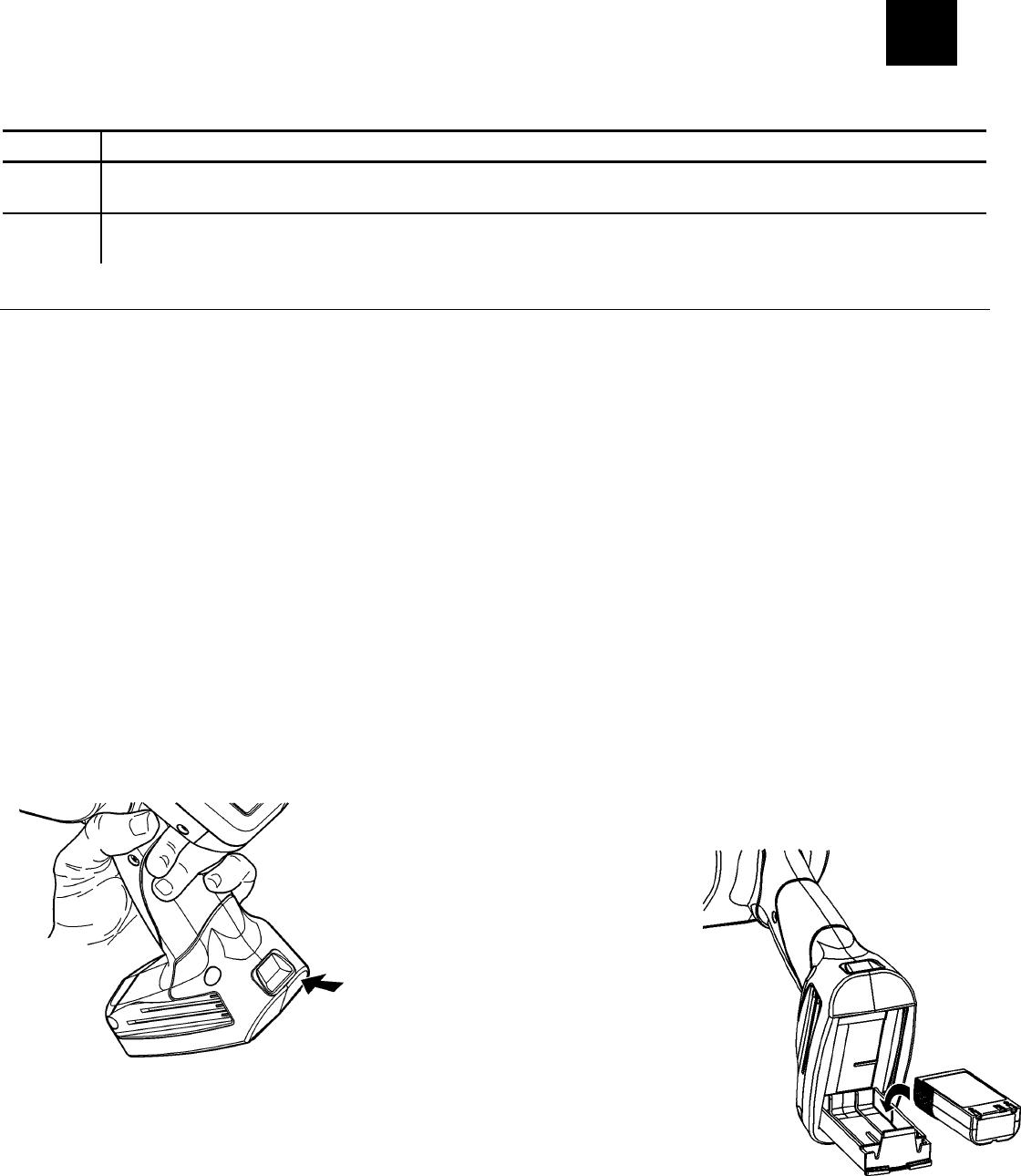
Using Batteries 2-1
USING BATTERIES
The printer uses two batteries; a main battery and a backup battery.
Battery Use
Main Running the printer. It is rechargeable using one of the chargers listed in Appendix A,
“Specifications & Accessories.”
Backup Maintaining the printer’s system settings. Charges from the main battery. Not user
replaceable.
Using the Main Battery
The printer’s main power source is a 7.4V lithium-ion battery. To order a replacement battery,
see Appendix A, “Specifications & Accessories” for more information.
Note: The printer uses only this battery; do not substitute batteries.
You must charge the battery when you receive the printer, even if you do not use it right away.
Charging the Main Battery
To charge the main battery, use one of the Monarch® chargers listed in Appendix A,
“Specifications & Accessories.” Refer to the documentation provided with the chargers for more
information. Charging time is approximately 1.5 – 3 hours.
Warning: The battery must be charged using only the chargers listed in this manual; the
battery might explode if placed on a different charger.
Replacing the Main Battery
To change the main battery:
1. Hold the printer upright with one hand and press the battery release button on the handle
with your other hand.
2. The battery compartment door opens slightly. Use your finger to open
the door.
3. Remove the battery.
4. Insert a new battery (label side up) into the compartment (connector end last).
5. Close the compartment door until it clicks into place.
2
DRAFT
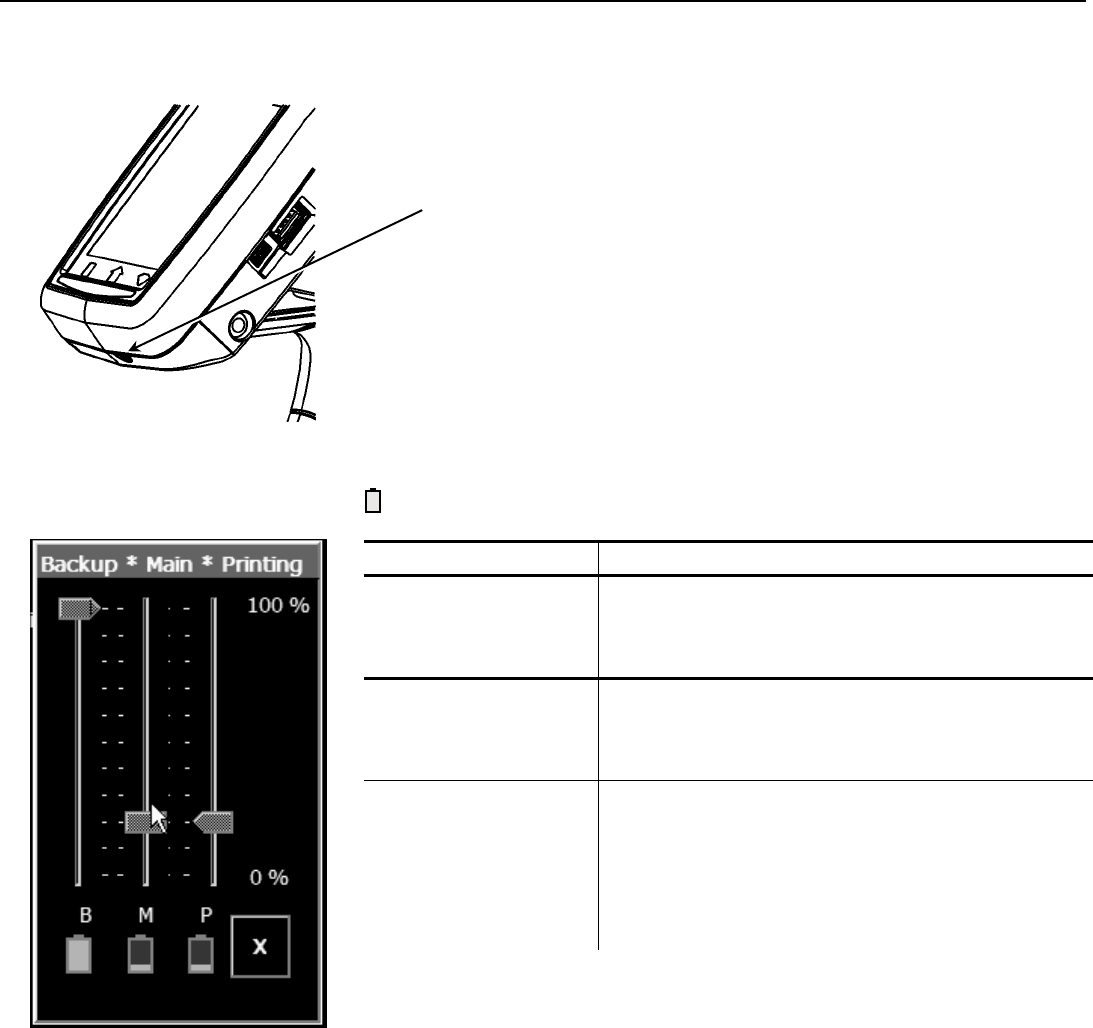
2-2 Operator's Handbook
Checking the Battery Status
The printer easily provides the status of the main and backup batteries.
1. Turn on the printer.
2. Tap the HOME key.
3. Double tap the battery icon ( ).
4. Tap X to close the battery status window.
Power Supply Description
Backup Battery Shows the status of the backup battery. If you
replace the main battery, its charge depletes
while charging the backup battery. You
cannot replace the backup battery.
Main Battery Shows the status of the main battery. If the
status is low, printing may be interrupted.
Replace the main battery in the printer with a
fully charged battery.
Printing Shows the power levels of the main battery
for system operations and printing. If the
printing power level is low, you may still be
able to use Windows functions, but you do
not have enough battery power to print.
Replace the main battery in the printer with a
fully charged battery.
Power Button
DRAFT

Using Batteries 2-3
Main Battery Safety Information
To order a replacement battery, see Appendix A, “Specifications & Accessories” for more
information.
You must charge the battery before using it. For optimal battery life, charge the battery
within three months of receipt.
Warning: The battery must be charged using only the chargers listed in this manual; the
battery might explode if placed on a different charger.
Take the battery out of the printer when storing the printer for a month or longer.
The optimal battery storage temperature is 50°F to 73°F (10°C to 23°C), with a maximum of
104°F (40°C). The battery may permanently lose its charge capacity if stored at
temperatures less than 32°F (0°C) or greater than 104°F (40°C). For longest life, the battery
should be stored in a cool, dry place.
The operating temperature for the battery is the same as for the printer. See Appendix A,
“Specifications and Accessories,” for more information.
The recommended charging temperature is 68°F to 77°F (20°C to 25°C)
Recycle Information – Do not throw in the trash. Recycle according to your local regulations.
The Rechargeable Battery Recycling Corporation (RBRC) is a non-profit organization
created to promote recycling of rechargeable batteries. For more information about how to
recycle batteries in your area, visit www.rbrc.org. Batteries can also be returned postage-
paid to:
Avery Dennison ERC
200 Monarch Lane
Door #39
Miamisburg, OH 45342
Warning: Do not disassemble, short-circuit, heat above 80°C, or incinerate the battery; it
may explode.
Do not let the battery come into contact with metal objects.
Do not use a battery with a cracked case.
Do not get the battery wet.
It is normal for battery capacity to decrease up to 20% over the first 300 cycles of use.
The battery should be charged before long-term storage or after the battery has been
exhausted from a printing session. Frequent charging actually prolongs battery life and has
no negative effects such as memory loss.
The printer uses battery power even when it is not printing. Remove the printer’s main
battery and place on a charger when the printer is not in use.
Many factors affect your battery’s performance, including the quantity of labels printed,
percentage of black per label, and power management.
DRAFT
2-4 Operator's Handbook
DRAFT
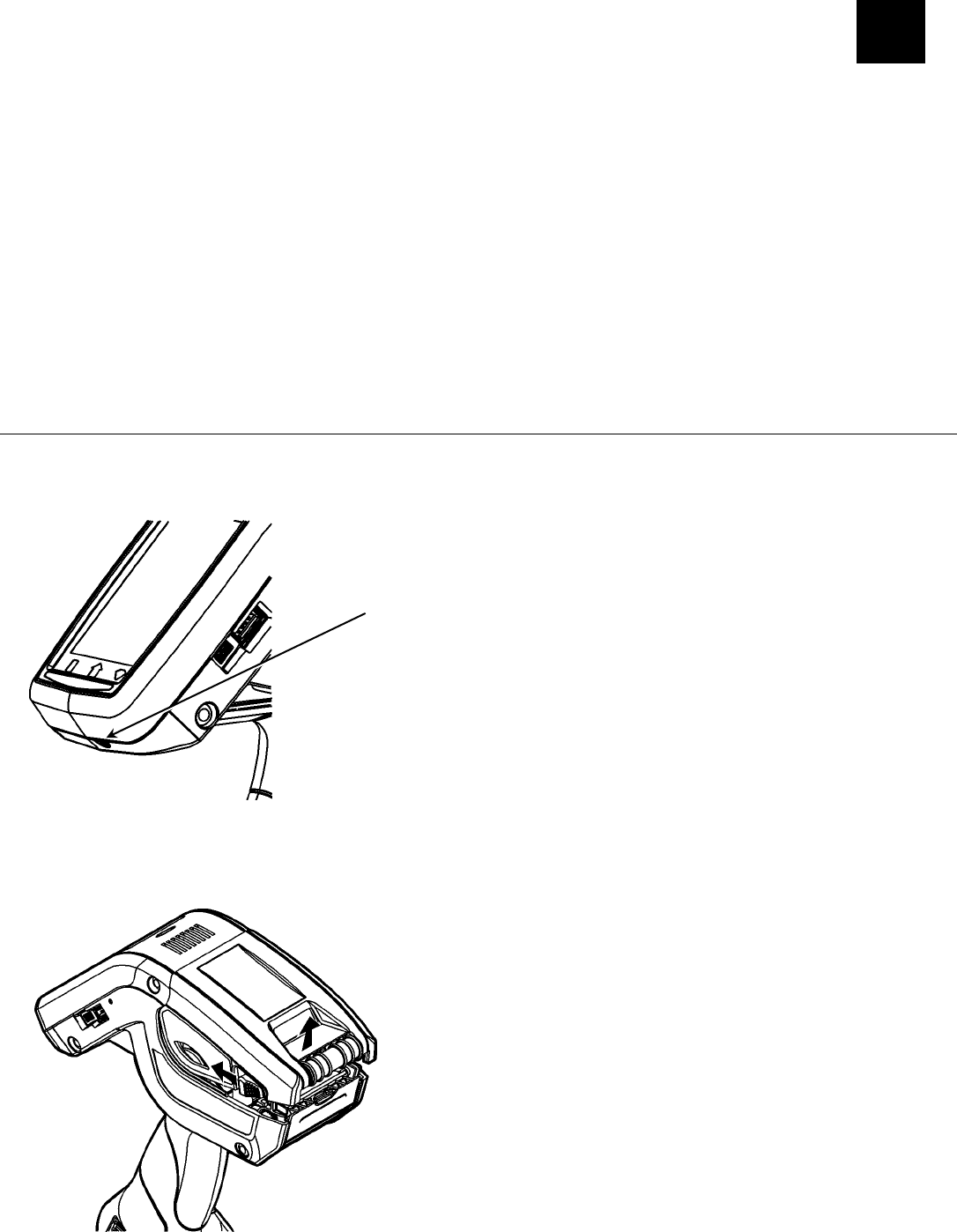
Using Supplies 3-1
USING SUPPLIES
The printer uses two types of supplies:
Labels
Tags
There are two print modes. The way you load the supplies depends on the print mode you use.
Peel mode removes the backing paper from the supplies as it prints the labels. This mode
allows you to apply the label immediately. It is only for labels. When using the on-demand
sensor, you can press the trigger to print a label or the next label prints automatically when
the previous one is removed.
Non-Peel mode does not remove the backing paper. It is for tags and labels printed in a
continuous strip.
Loading Supplies
To load supplies:
1. Turn on the printer.
2. Press the latch buttons and open the supply cover.
Open the spring-loaded supply holder. Spread the supply holder tabs apart with one hand so
it adjusts to the size of your supply roll.
3
Power Button
DRAFT
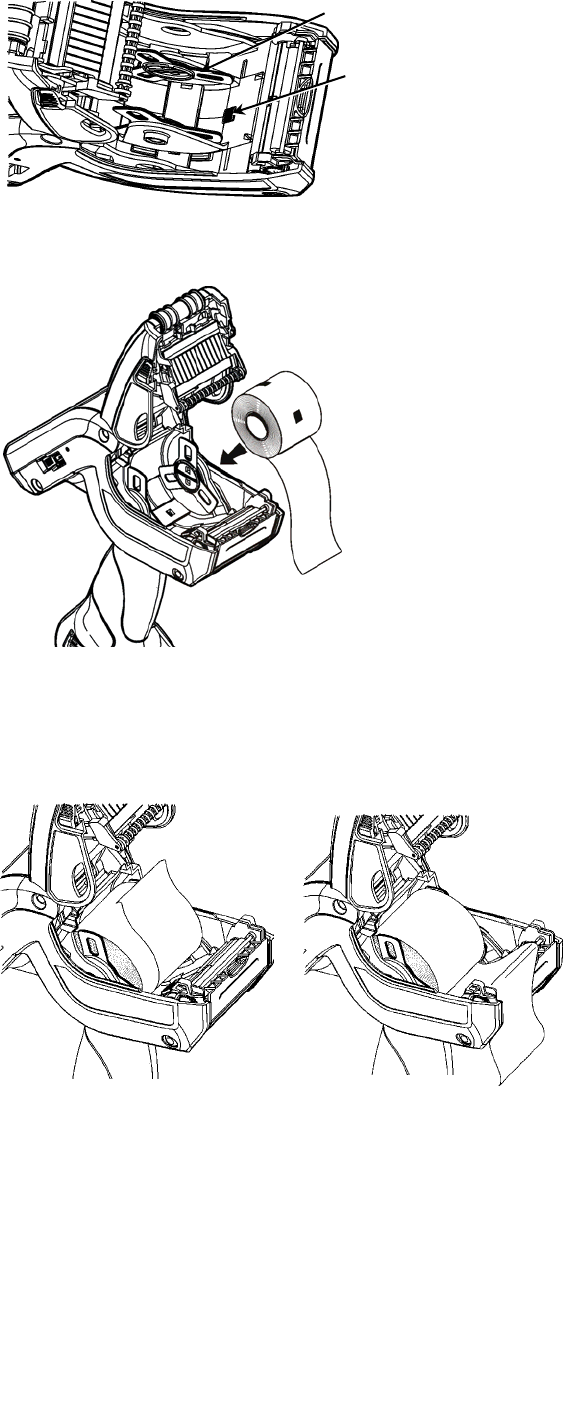
3-2 Operator's Handbook
3. Press the supply lock tab all the way down (towards the inside of the printer) to lock the
supply holder at 1.2”. Adjust it to the middle position to lock the supply holder at 1.5”.
Adjust it all the way up (towards the opening of the printer) to lock the supply holder at 2.0”
4. Place the supply roll in the supply holder so the supply feeds from the bottom.
5. Continue loading supply for the printing mode you want (peel or non-peel).
Loading for Non-Peel Mode
1. Feed the supply over the platen roller, peel bar, and label deflector.
2. Close the supply cover.
3. Calibrate the supply. See “Calibrating the Supply” for more information.
Supply Holder
Supply Lock Tab
DRAFT
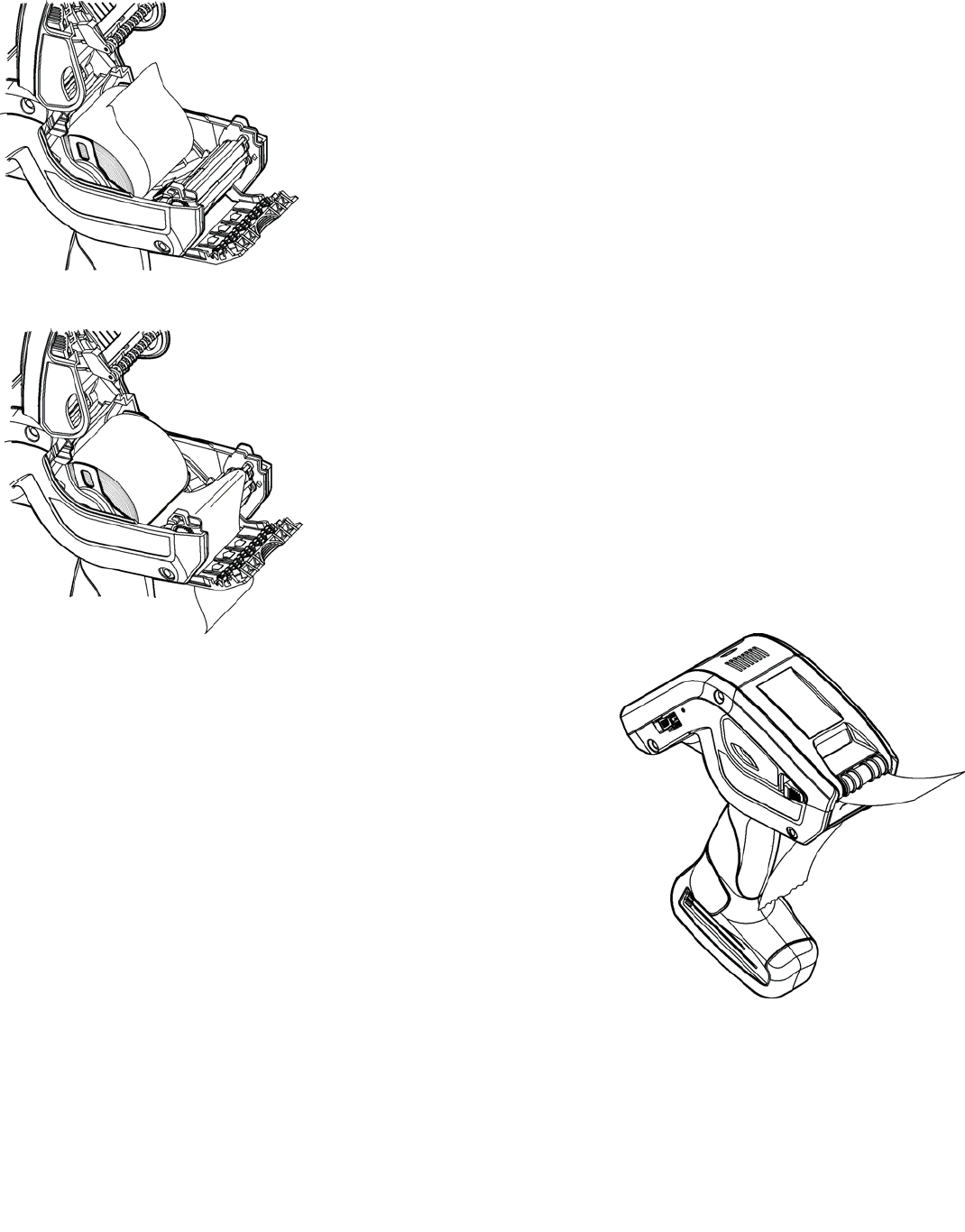
Using Supplies 3-3
Loading Peel Mode Supplies
1. Peel and discard the first four inches of labels from the backing paper.
2. Hold the printer upright and gently push down on the label deflector.
3. Feed all four inches of the backing paper over the peel bar and under the label deflector.
4. Close the cover.
5. Hold the backing paper and push up the label deflector
until it snaps into place.
6. Calibrate the supply. See “Calibrating the Supply” for
more information.
DRAFT

3-4 Operator's Handbook
Home
Calibrating the Supply
To calibrate the supply:
1. Turn on the printer.
2. Tap the home key.
3. Tap Load Supply.
4. Tap Calibrate Stock. A label or two feeds while the
supply is calibrated.
Selecting the Supply Type
To select the supply type:
1. Turn on the printer.
2. Tap the home key.
3. Tap Printer Config.
4. Tap Print Energy Vals.
5. Select the printhead energy as Standard or High. Use High for synthetic supplies. Use
Standard for all other supplies.
6. Check Use Black Mark if your supplies have a black mark.
7. Tap Done when finished.
DRAFT
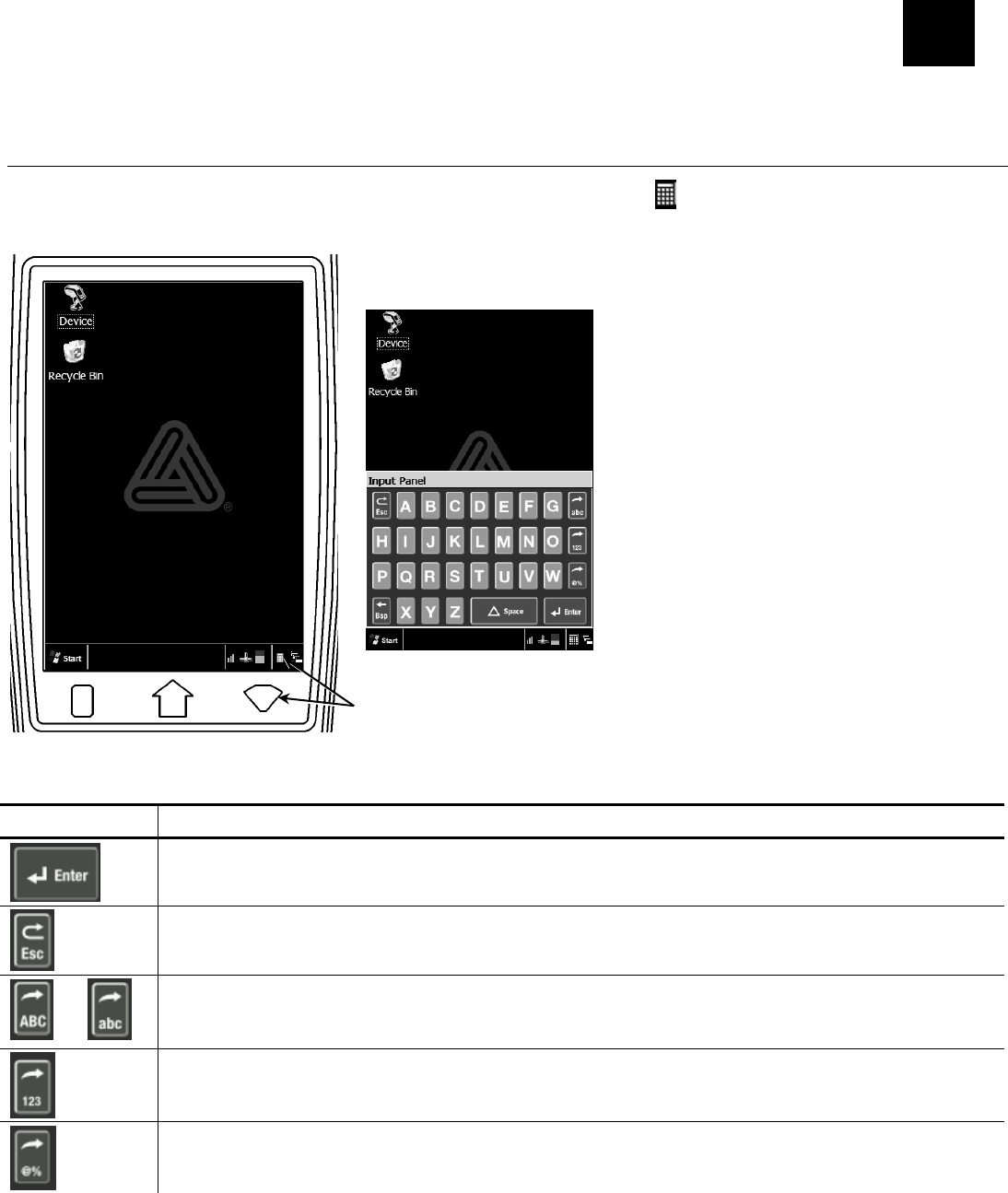
Entering & Printing Data 4-1
ENTERING & PRINTING DATA
This chapter explains the printer’s features and how to use them.
Using the Input Panel
To access the printer’s input panel, touch the input panel icon located in the lower right-hand
corner of the display or the Diamond key.
4
Key(s) Description
Accepts data or menu selection.
Closes any open windows. Closes the input panel.
or
Displays upper case or lower-case alphabetic input panel.
Displays numeric input panel.
Displays special character & symbol input panel.
Input Panel
DRAFT
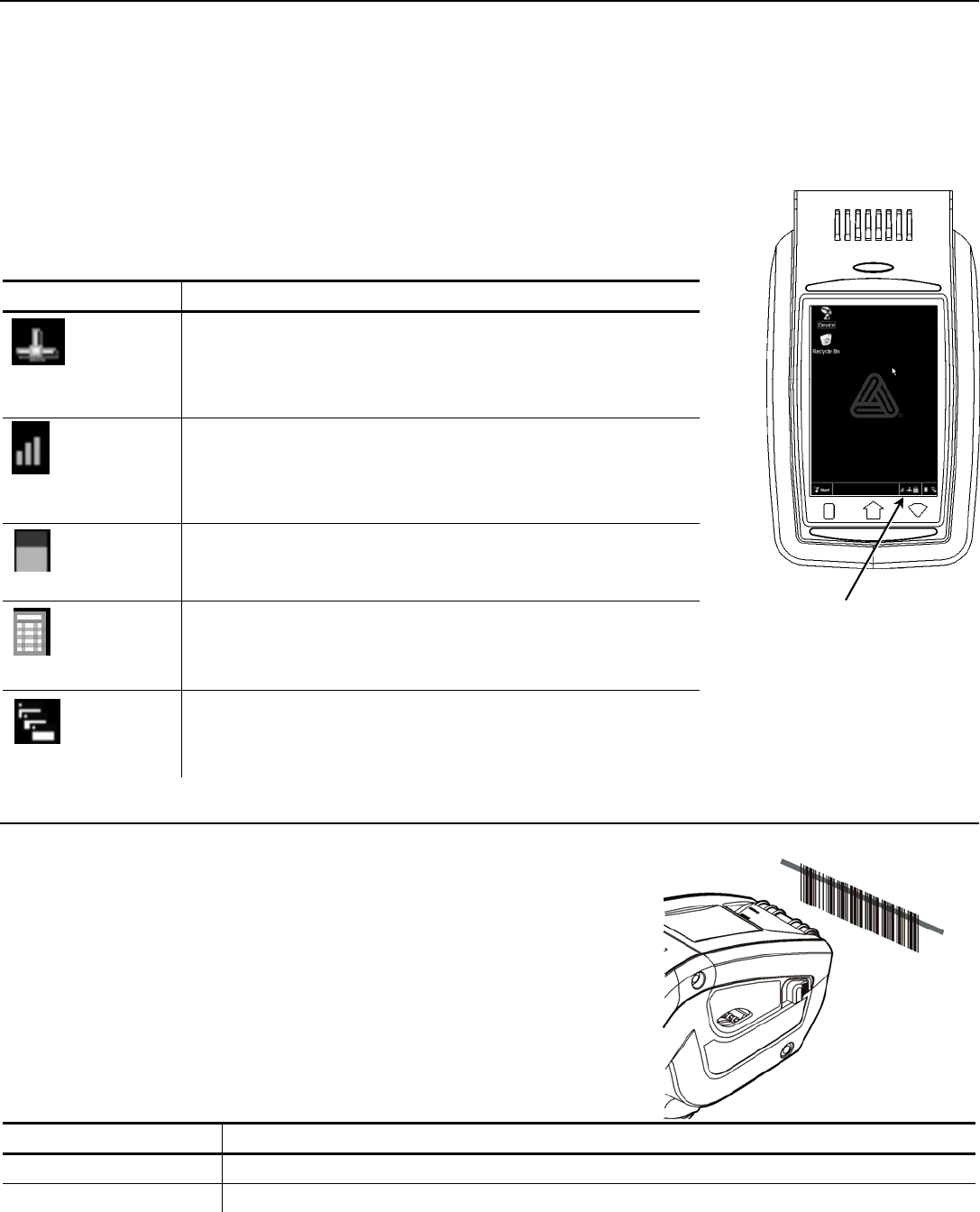
4-2 Operator's Handbook
Using the Display
The printer has a touch screen display similar to a hand held computer. Touch the screen to
select the option you want from the display.
Note: Use only your finger on the display. Pens and other items can cause damage. Use
distilled water and a soft cloth to clean the display. Do not use household cleaners.
To change the sound (beep) and other standard Windows options, from the Start Menu, tap
Settings, Control Panel.
Reading the Status Bar
The Status Bar has the following indicators:
Indicator Description
Wireless
Connection
Tap to configure the wireless connection settings.
Wireless Singal
Strength
Indicates wireless signal strength.
Battery Status
Tap to see battery status information. See “Checking
the Battery Status” in Chapter 2 for more information.
Input Panel
Tap to open the Input Panel.
Desktop
Tap to minimize any open windows and return to the
desktop.
Scanning Bar Codes
Your printer may have a built-in scanner.
To scan a bar code:
1. Point the scanner at a slight angle, approximately 4 – 8
inches from the bar code symbol.
2. Press the trigger or other key specified by your System
Administrator.
Caution: Do not stare into the beam.
The scanner LED is at the top of the keypad.
Scanner LED Description
Green Successful scan.
Amber Unsuccessful scan.
Status Bar
DRAFT
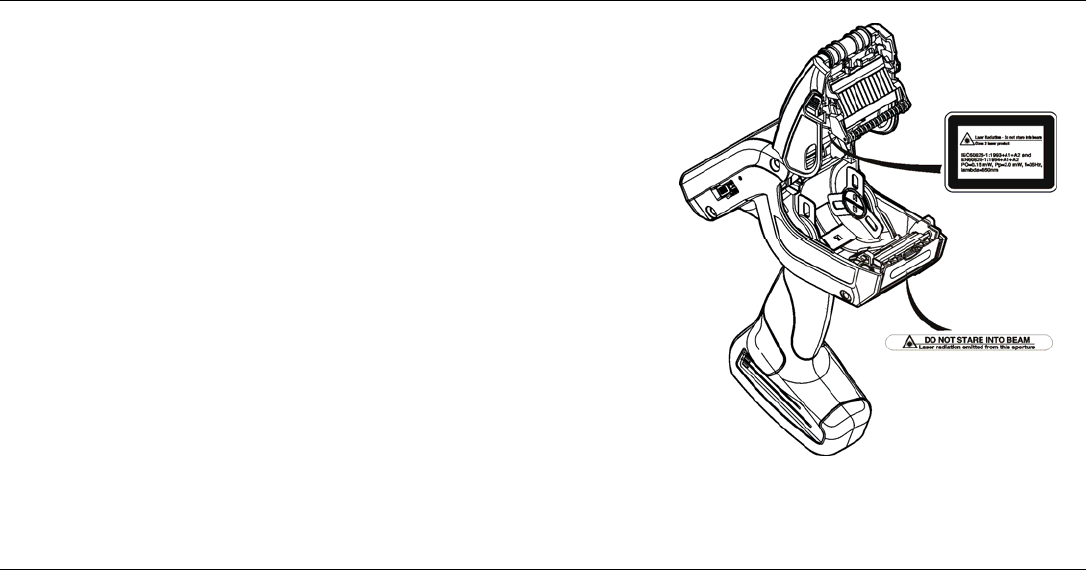
Entering & Printing Data 4-3
If the bar code does not scan:
Change the scanner’s angle slightly and try again.
Clean the scanner window. See “Cleaning” in Chapter 5 for more information.
Move the scanner 4 – 8 inches away from the bar code. Adjust this distance as needed to
find the correct distance.
Try scanning another bar code that you have scanned successfully.
If that scan is successful, the scanning problem is with the bar code.
Move to a more dimly lit area.
Ensure there are no voids (streaks) in the bar code symbol.
If the scan is still unsuccessful, ask your System Administrator to perform a scanner test.
Certification Note
This product is certified to be a Class II laser product with
the United States DHHS Center for Devices and
Radiological Health and complies with 21CFR1040.10 and
1040.11 except for deviations pursuant to Laser Notice
No. 50, dated July 26, 2001, The scanner emits less than
2.0 milliwatt beam of laser light from the scanning window.
Laser light in excess of Class I limits must be inside a
protective cover. No maintenance is required to keep this
product in compliance with EN 60825, IEC60825, and
DHHS Regulation 21, Subchapter J. No controls are
provided for operation or maintenance.
Caution: Use of controls, adjustments or performance
of procedures other than those specified
herein may result in hazardous laser light
exposure.
Class II laser scanners use a low power, visible light
diode. As with any very bright light source, the user should avoid staring directly into the light
beam. Momentary exposure to a Class II laser is not known to be harmful.
Printing
When and how you print depends on your printer’s application. It may print
only after you press a certain key
automatically as soon as you press a key
automatically with no input from you
one label or a strip of labels.
DRAFT
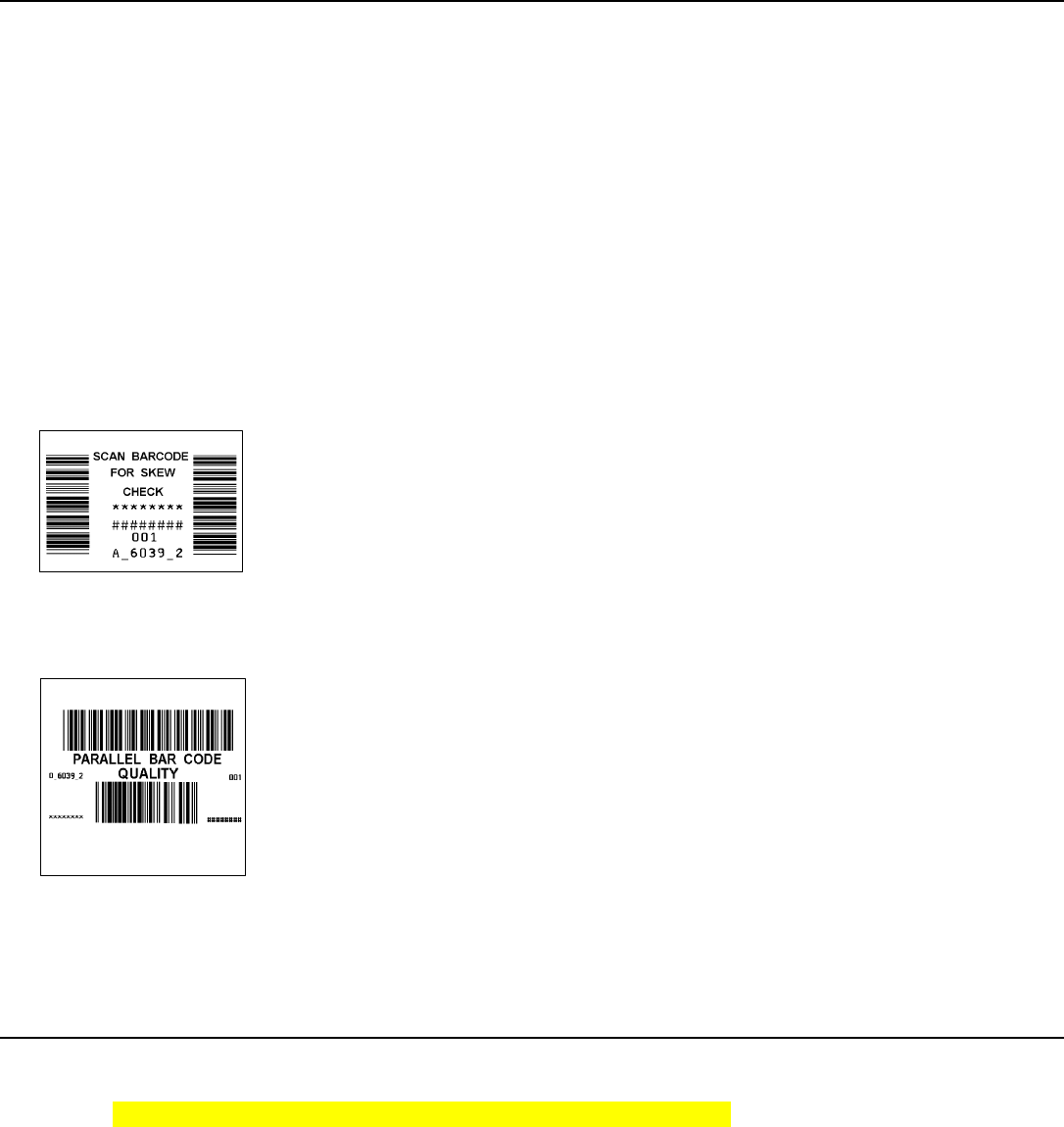
4-4 Operator's Handbook
Adjusting the Print Contrast
To adjust the print contrast:
1. Turn on the printer.
2. Press the home key.
3. Tap Printer Config and then Print Energy Vals.
4. Tap the left or right arrows to increase or decrease the contrast.
The higher the number, the darker the print; the lower the number, the lighter the print.
The print contrast controls the darkness of the printing on your supply. The range is –28
to +40 and the default is 0. You may need to increase or decrease the print contrast
depending on your supply type. Having the correct print contrast setting is important
because it affects how well your barcodes scan and how long your printhead lasts.
5. Tap Print Serial Quality Label to print a label with bar codes to scan and check the quality
of serial bar codes.
6. Tap Print Parallel Quality Label to print a label with bar codes to scan and check the
quality of parallel bar codes.
7. Tap Done when finished.
Power Management
The printer shuts off after a predetermined amount of idle time. The printer “wakes up” when
you start using it again. Turn off the backlight to conserve power when leaving the printer on
and idle. From the Control Panel, tap Power, Display, Backlight.
DRAFT
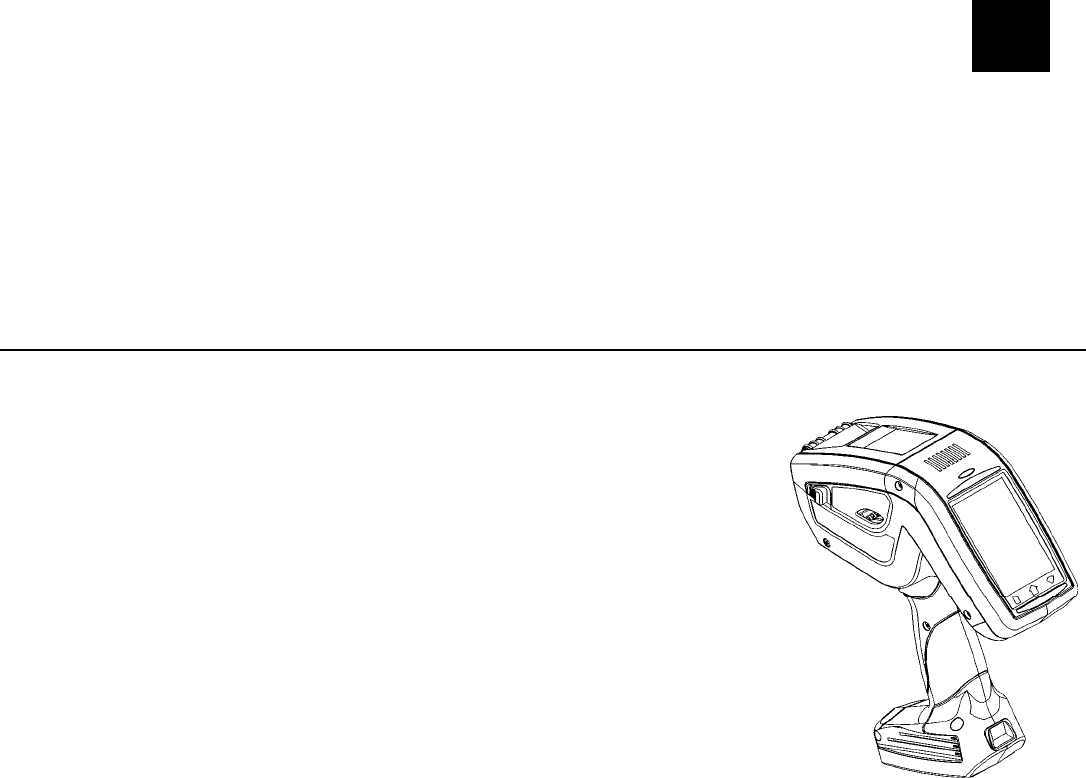
Care & Maintenance 5-1
CARE & MAINTENANCE
Caring for and properly maintaining your printer protects it and keeps it running smoothly.
This chapter explains how to
clean the printhead, platen roller, sensors, and scanner window
clear supply jams
store the printer.
Cleaning
It is important to keep the printer clean. You must clean five main areas:
Display
Printhead
Platen Roller
Sensors
Scanner Window
Scanner Flex Cable
Do not use sharp objects to clean the printer.
Do not use household cleaners to clean the printer.
Cleaning the Display Screen
Make sure the printer is turned off when cleaning the display. Use distilled water and a soft
cloth to clean the display.
Do not use household cleaners.
Cleaning the Printhead
Clean the printhead
after using 7-10 rolls of supplies
in extreme temperatures, humid conditions, or a dirty environment
when you see voids in the print
after a supply jam.
CAUTIONS: The following actions may damage the printhead and void your warranty.
Do not use silicone to clean or lubricate.
Do not use sharp objects to remove adhesive or label particles from the printhead area.
Do not touch the printhead with your fingers.
5
DRAFT
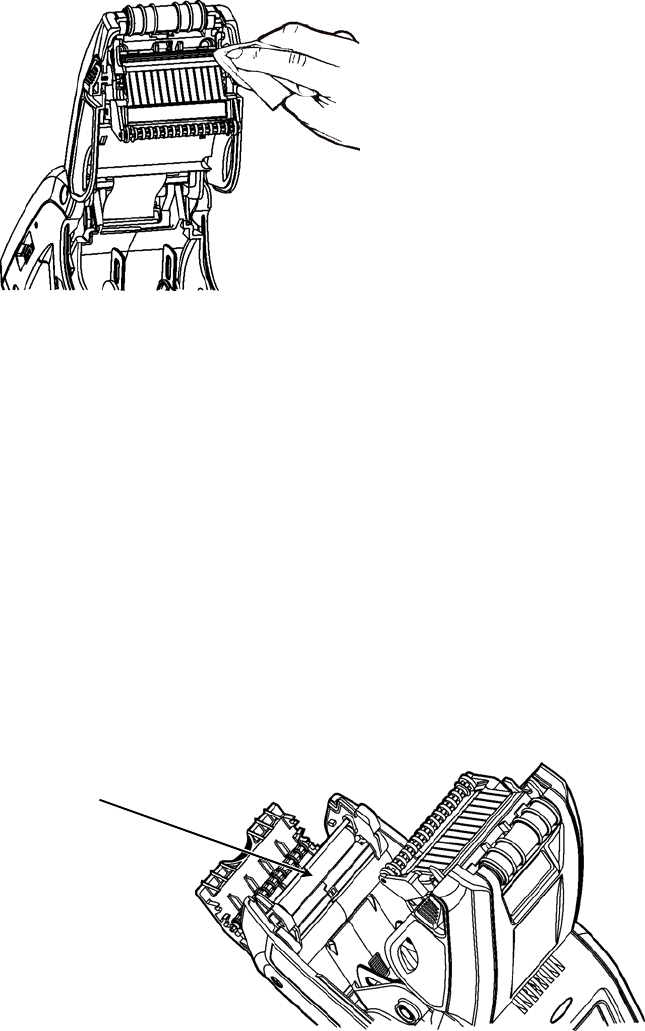
5-2 Operator's Handbook
To clean the printhead:
1. Turn off the printer.
2. Open the supply cover and remove the supplies.
3. Check the supply holder for adhesive buildup and clean it if necessary.
4. Ground yourself by touching a metal object other than the printer. Grounding prevents
electrostatic discharge, which may damage your printer.
5. Clean the printhead area of all adhesive and label particles using a Cleaning Pen or a soft
cloth moistened with isopropyl alcohol.
6. Reload the supply roll and close the supply cover.
Cleaning the Platen Roller
Clean the platen roller when you see significant adhesive build-up or when a label is wrapped
around the platen roller.
1. Turn off the printer and open the supply cover.
2. Remove the supplies.
3. Hold the printer upright and gently push down on the label deflector. It may be stiff.
4. Use a dry, soft-bristle brush, such as a toothbrush, to clean the platen roller.
If the brush does not remove all the adhesive use isopropyl alcohol ONLY on the platen
roller. Moisten a cotton swab with isopropyl alcohol and run the cotton swab across the
platen roller. After cleaning, feed several inches of supply through without printing to
remove any remaining isopropyl alcohol.
5. Reload the supplies, close the label deflector and supply cover.
Platen Roller
DRAFT
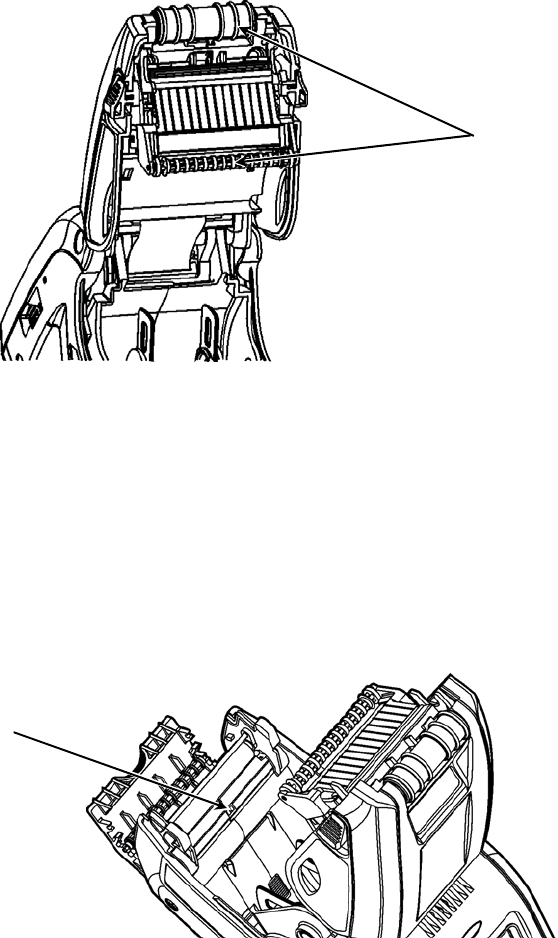
Care & Maintenance 5-3
Cleaning the Pinch and Feed Rollers
To clean the pinch and feed rollers:
1. Turn off the printer and open the supply cover.
2. Remove the supplies.
3. Rub a dry, lint-free cloth across the pinch and feed rollers as they turn. Make sure the
rollers are clean all the way around. If necessary, use a cloth dampened slightly with
distilled water.
4. Reload the supplies after the printer dries.
Cleaning the Black Mark Sensor
To clean the black mark sensor:
1. Turn off the printer and open the supply cover.
2. Remove the supplies.
3. Open the label deflector by gently pushing down on the label deflector.
4. Clean the black mark sensor with a dry cotton swab.
5. Reload the supplies, close the cover and the label deflector.
Black Mark
Sensor
Pinch and
Feed Rollers
DRAFT
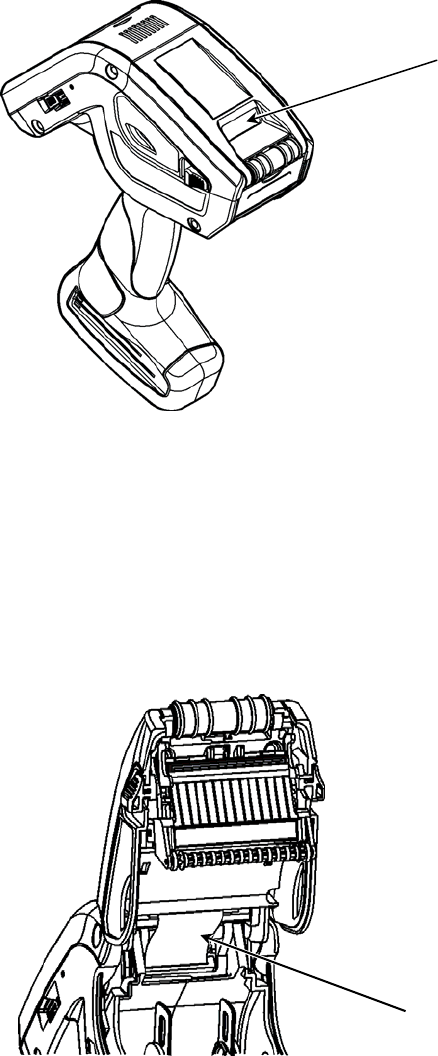
5-4 Operator's Handbook
Cleaning the Scanner Window
Clean the scanner window whenever it appears to be dirty or smeared. To clean it:
1. Moisten a soft cloth with distilled water. Do not use household cleaners to clean the printer.
2. Wipe the window until it is completely clean.
Cleaning the Printhead Flex Cable
Occasionally, adhesive buildup appears on the printhead flex cable. To clean the cable:
1. Turn off the printer and open the supply cover.
2. Inspect the printhead flex cable. At any place that adhesive buildup appears, clean the
cable with 99% isopropyl alcohol and a cotton swab.
3. Close the supply cover.
Scanner Window
Printhead Flex
Cable
DRAFT

Care & Maintenance 5-5
Clearing Supply Jams
To clear a supply jam:
1. Turn off the printer and open the supply cover completely.
2. Open the label deflector by gently pushing down on the label deflector.
3. Remove the supplies.
4. Carefully remove any jammed supply and close the deflector.
Note: Do not pull the jammed supply out through the front of the label deflector. Do not use
sharp objects to remove jammed supplies.
5. Carefully remove any jammed supply.
6. Clean any adhesive build-up.
7. Reload the supplies, close the cover and the label deflector.
Storing the Printer
Do not store the printer in or near
magnetic fields
wet or damp areas
dirty or dusty areas
areas of intense vibration or shock.
DRAFT
5-6 Operator's Handbook
DRAFT
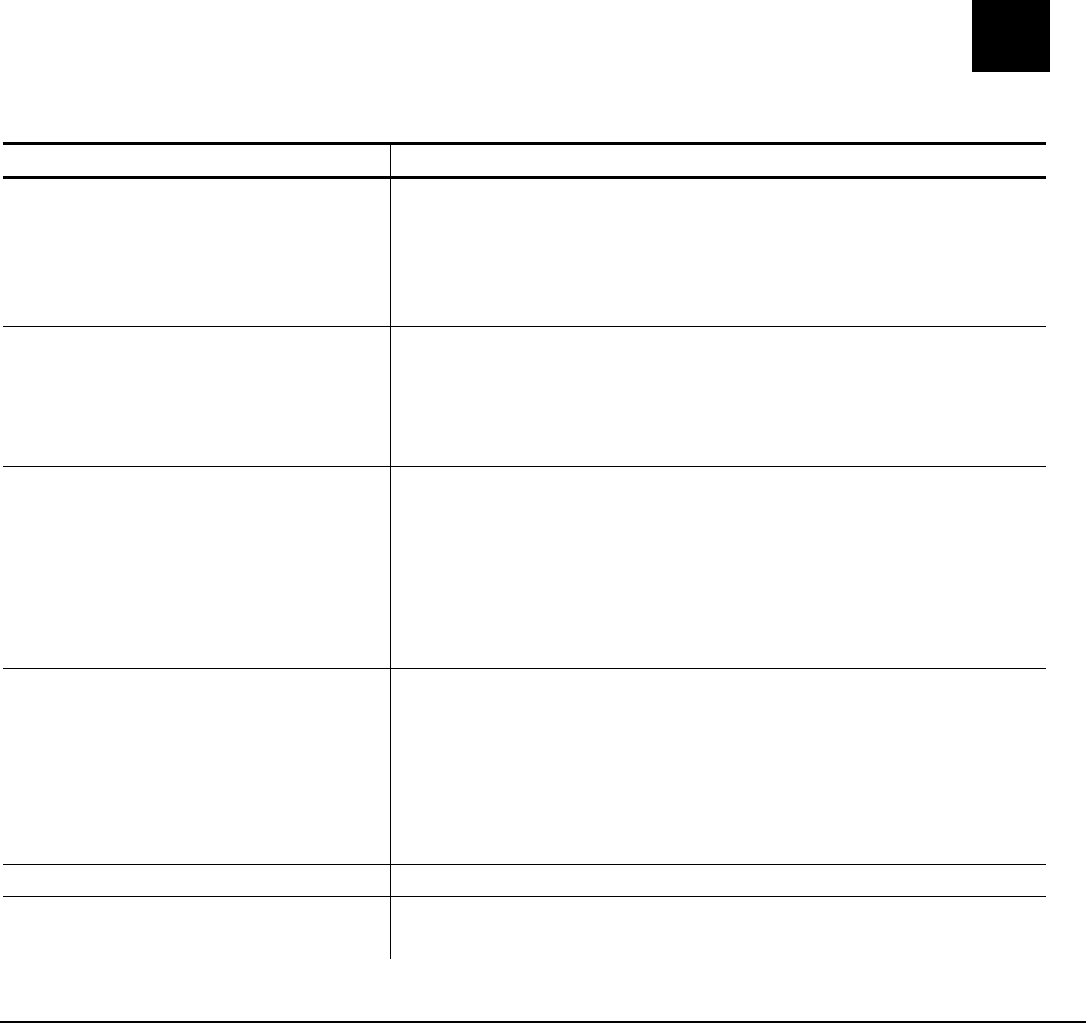
Troubleshooting 6-1
TROUBLESHOOTING
This section lists some common printer problems and their solutions.
Problem Solution
Printer does not feed. Switch to a fully charged battery.
Close the supply cover completely.
Load the supply correctly. See “Loading Supplies” in
Chapter 3 for more information.
Check the platen roller for jammed labels.
Printer does not print. Switch to a fully charged battery.
Load the supply correctly. See “Loading Supplies” in
Chapter 3 for more information.
Clean the printhead. See “Cleaning the Printhead” in
Chapter 5 for more information.
Print has voids or is too light. Load the supply correctly. See “Loading Supplies” in
Chapter 3 for more information.
Close the supply cover completely.
Switch to a fully charged battery.
Clean the printhead. See “Cleaning the Printhead” in
Chapter 5 for more information.
Check the supply for damage or defects.
Printer partially prints on the
supply and fails to respond to the
keypad or trigger.
Load the supply correctly or load new supplies, if necessary.
See “Loading Supplies” in Chapter 3 for more information.
Clear any supply jams.
Clean the printhead. See “Cleaning the Printhead” in
Chapter 5 for more information.
Switch to a fully charged battery.
Scanner does not scan a bar code. See “Scanning Bar Codes” in Chapter 4 for more information.
The display does not turn on. Make sure the power is on.
Switch to a fully charged battery.
Checking the Software Version
To check the Software version of the printer, the Ultra Class library, the scanner configuration,
printer diagnostics, and the Application version:
1. Turn on the printer.
2. Press the home key.
3. Tap About.
4. Scroll to check the versions of the API, print engine, etc.
5. Tap Done when finished.
6
DRAFT
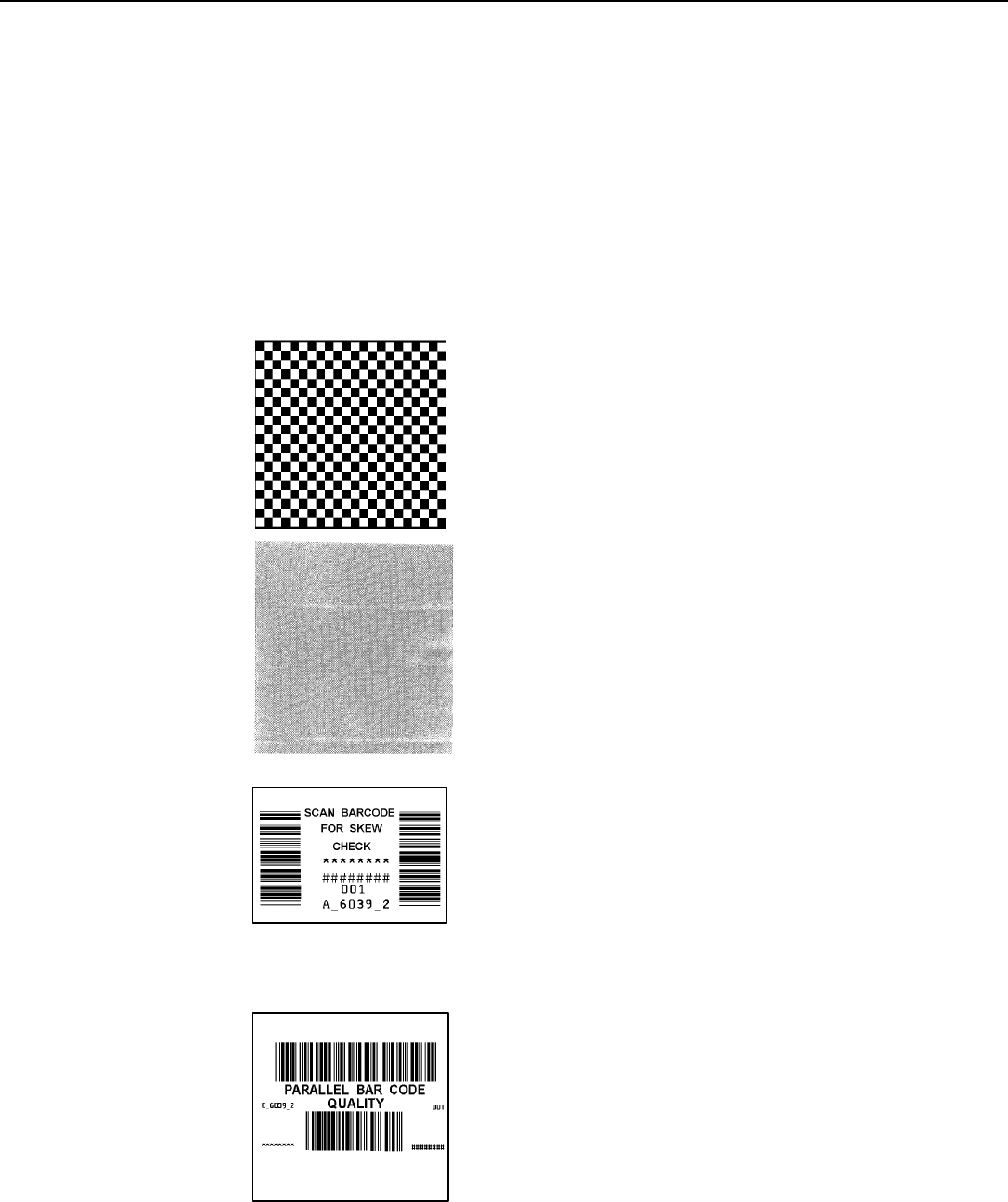
6-2 Operator's Handbook
Label with voids
Printing a Test Label
To print a Test Label:
1. Press the home key.
2. Tap Printer Diag.
3. Tap Diagnostic Labels from the Print Engine Tests screen.
4. Tap one of the following from the Diagnostic Labels screen.
Select: The following labels print:
Information Labels Prints a label that contains the printer information.
Checkerboard Label Prints a label to verify that the printhead strobes
are working. If your printed sample has fewer
lines or no lines, keep the sample and call
Service.
Gray Scale Label The gray scale test checks the uniformity of the
printing. The printed sample should be
uniformly gray across the supply. If you see
voids, especially on the edges, keep the sample
and call Service.
Serial Quality Label A label prints bar codes for you to scan to check
the quality of serial bar codes.
Parallel Quality Label A label prints bar codes for you to scan to check
the quality of parallel bar codes.
DRAFT
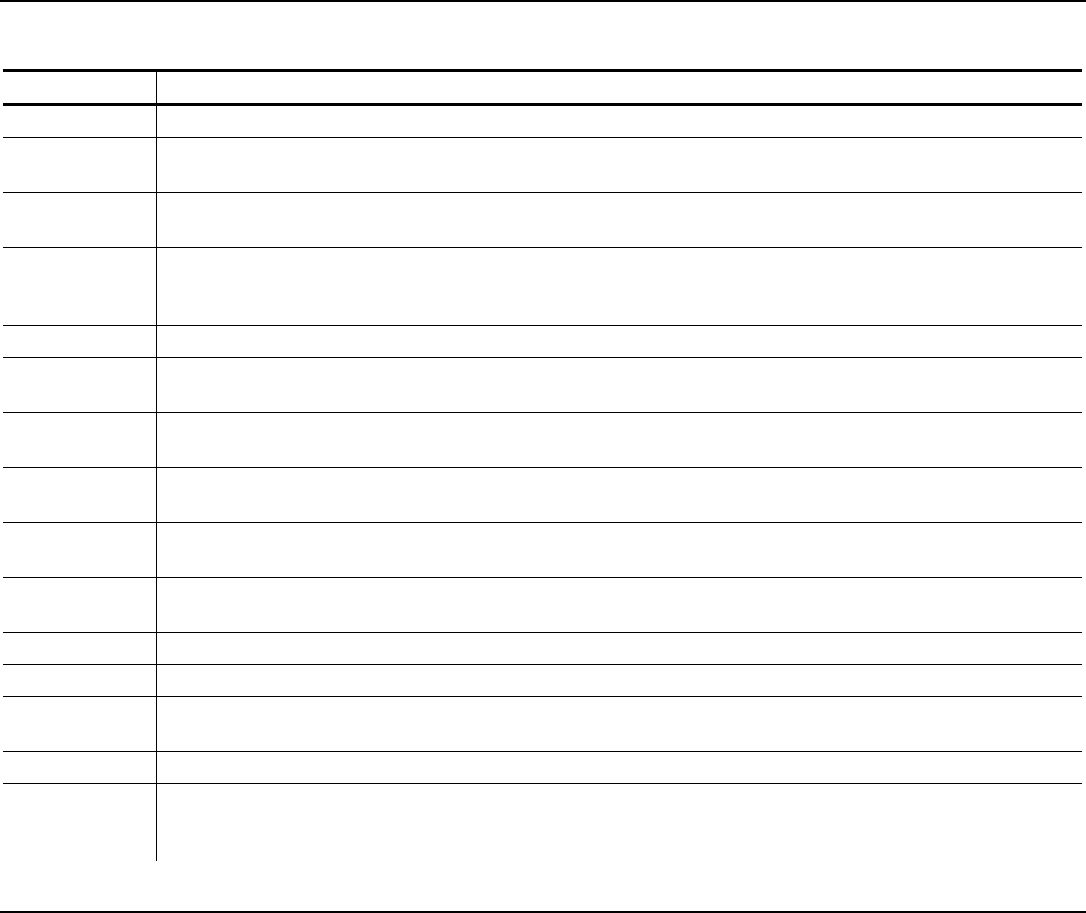
Troubleshooting 6-3
Error Codes
This section lists common error codes and their descriptions.
Code(s) Description
004 - 005 Supply size is incorrect. Reload the correct supplies.
267 – 271
410 - 413 Communication error. See your System Administrator.
703 - 704 Supply Error. Load supplies or make sure they are loaded correctly. See “Loading
Supplies” in Chapter 3 for more information.
706 Remove any jammed supplies. See “Clearing Supply Jams” in Chapter 5 for more
information. If the supply is not jammed or you have removed the jam, and the error
continues, see your System Administrator.
750 Printhead is overheated. Turn off the printer to let it cool.
751 - 753 The printer sensed a problem with a mark on the supplies. Check the supplies to see if
they are loaded correctly.
756 The printer is out of supplies. Load supplies. See “Loading Supplies” in Chapter 3 for
more information.
757 The calibrated supply length differs by plus or minus .25 inches from the format. Load
supplies.
758 Check supply. Remove any printed labels. Check for a label jam. Clear the supply
path or reload supplies.
762 Low battery. Recharge the battery. See “Charging the Main Battery” in Chapter 2 for
more information.
763 Waiting to dispense label. Press the trigger.
768 Printhead error. See your System Administrator.
790 - 791 The printer is busy or has an error pending. Turn off the printer, wait two seconds, and
then turn it back on.
904 – 911 System error. See your System Administrator.
SYSTEM
ERROR
VECTOR ##
System error. See your System Administrator.
Technical Support
If these solutions do not work or you have a problem or error code not listed, see your System
Administrator or call Service at the number listed on the back of this manual.
DRAFT
6-4 Operator's Handbook
DRAFT
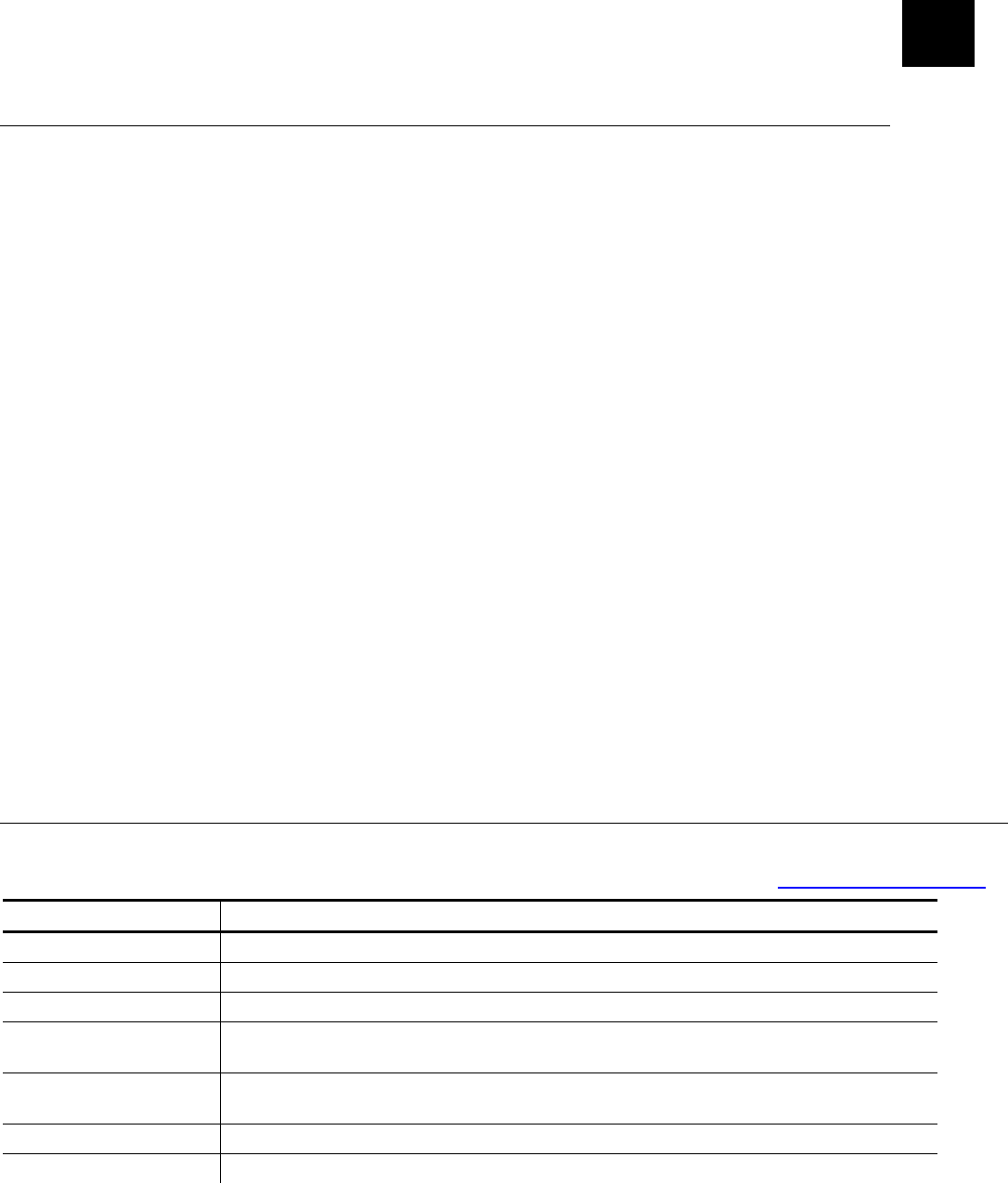
Specifications & Accessories A-1
SPECIFICATIONS & ACCESSORIES
Specifications
Dimensions: Width – 3.3” (84 mm)
Length – 9.84” (250 mm)
Height – 7.9” (201 mm)
Weight – 1.8 lbs. (822 g)
Shipping Weight – 5.9 lbs. (2.6 kg)
Printhead: 1.89" (48mm/384 dots) (203 dots per inch)
Printing: Thermal direct (no ink /ribbon)
Print Speed: Up to 4" (102 mm) per second
Memory: 128 MB DDR RAM; 256 MB NAND Flash
Battery Type: 7.4V Lithium-Ion (110V – 240V AC adapter)
3.6V Lithium-Ion (internal)
Battery Recharge
Time: 1 – 3 hours, depending on the charger used.
Supply Sizes: Widths: 1.2", 1.5", and 2.0" (12.7mm, 30mm, 38mm, and 51mm)
adjustable between 1.2 – 2.0” (12.7 mm – 51 mm)
Lengths .55" – 4.0" (14mm –102mm)
Peel mode supports .785" (20 mm) or greater lengths.
Non-Peel mode supports .55" (13.97mm) or greater lengths.
Operating
Temperature: 40°F – 110°F (4°C – 43°C)
Humidity (Operating
& Storage): 5% – 90% non-condensing
Accessories
This section lists some of the accessories available for your printer and their part numbers. For
more accessories, refer to the Accessories List available on our Web site (www.monarch.com).
Part Number Description
M09462 Single-Station Battery Charger
M09465 Four-Station Battery Charger
114226 Cleaning Pen
M06054 Communication Charging System
Use one system with up to four 6055 Communication Charger Stations
M06055 Communication Charger Station
with a built-in stand that charges the battery while inside the printer
125859 USB Cable
12009502 Extra Battery
A
DRAFT
A-2 Operator’s Handbook
DRAFT
DRAFT
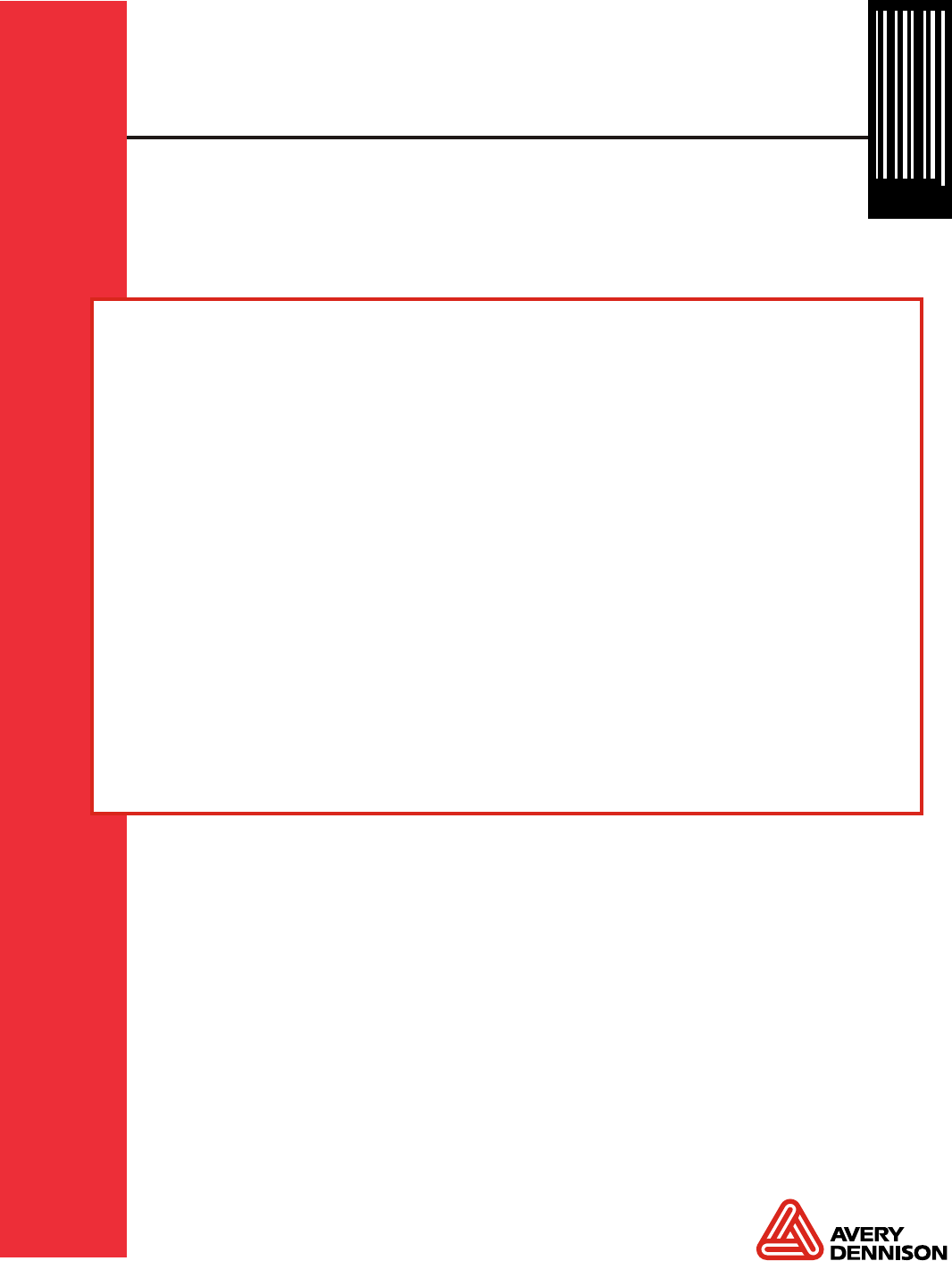
28028 28028
0 0
Avery Dennison Printer Systems Division
170 Monarch Lane
Miamisburg, OH 45342
1-800-543-6650 (In the U.S.A.)
1-800-387-4740 (In Canada)
www.monarch.com
DRAFT